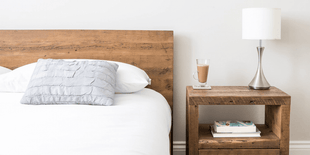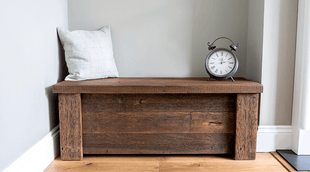 On the majority of wooden furniture there will be some kind of finish that is intended to protect the wood from any kind of damage such as wax or polish however, this protective layer doesn’t always suffice and marks can appear on the wood but there’s no need to worry because there are several ways that you can rectify the problem. Generally when a mark appears on a piece of the wooden furniture it is the finish, rather than the wood itself, that is damaged, which is why all of the protective finish has to be removed. The way you approach the removal and refinishing of the piece of furniture depends entirely on how much of it is damaged. If the damage is limited to one area then a spot repair might be possible however, if there are a number of damaged areas then it’s worth stripping the entire piece in order to refinish it all. Deep scratches and burns will validate the complete removal and reapplication of the finish which, although involves more work, is actually much easier than spot finishing a single area. If you’re staining only one area of wood then it’s essential to find one that matches the current stain on your furniture. It’s a good idea to use an oil-based stain and test it out on an unfinished piece of the furniture that you can’t see before using it on the damaged area. If the stain seems to take to the untreated section easily and the finish is as you desire then you should be fine to use it on the damaged section of the wood but bear in mind that you should prevent the new layer of stain overlapping the old layer otherwise it’s likely to dry unevenly and consequently mean that you’ll have to strip the entire piece so that you can refinish it anyway. Before you apply any type of stain it’s essential to prepare the area of wood that you’ll be treating. You should apply the stain to the bare section of wood with a small paint brush or clean cloth and then wipe it off after 15 minutes to see whether or not the colour is as you’d like. If it’s not dark enough then you should do the same thing again until you’ve achieved the desired colour of stain. Once the stain has been applied and the relevant colour achieved you should buff and finish the area. Use steel wool or a tack cloth to buff the area and then apply a varnish or other finishing coat like lacquer or resin. Once this has been applied you should allow it to dry for a couple of days before buffing the overlapped areas with steel wool and then applying wax coat to the whole piece of furniture as a final touch. Following this advice will see damaged wooden furniture being brought back to life with just a few days of hard work. Following these tips will mean the difference between a piece of wooden furniture lasting only a few years and a few decades and will therefore save you a lot of money in the long run too.
On the majority of wooden furniture there will be some kind of finish that is intended to protect the wood from any kind of damage such as wax or polish however, this protective layer doesn’t always suffice and marks can appear on the wood but there’s no need to worry because there are several ways that you can rectify the problem. Generally when a mark appears on a piece of the wooden furniture it is the finish, rather than the wood itself, that is damaged, which is why all of the protective finish has to be removed. The way you approach the removal and refinishing of the piece of furniture depends entirely on how much of it is damaged. If the damage is limited to one area then a spot repair might be possible however, if there are a number of damaged areas then it’s worth stripping the entire piece in order to refinish it all. Deep scratches and burns will validate the complete removal and reapplication of the finish which, although involves more work, is actually much easier than spot finishing a single area. If you’re staining only one area of wood then it’s essential to find one that matches the current stain on your furniture. It’s a good idea to use an oil-based stain and test it out on an unfinished piece of the furniture that you can’t see before using it on the damaged area. If the stain seems to take to the untreated section easily and the finish is as you desire then you should be fine to use it on the damaged section of the wood but bear in mind that you should prevent the new layer of stain overlapping the old layer otherwise it’s likely to dry unevenly and consequently mean that you’ll have to strip the entire piece so that you can refinish it anyway. Before you apply any type of stain it’s essential to prepare the area of wood that you’ll be treating. You should apply the stain to the bare section of wood with a small paint brush or clean cloth and then wipe it off after 15 minutes to see whether or not the colour is as you’d like. If it’s not dark enough then you should do the same thing again until you’ve achieved the desired colour of stain. Once the stain has been applied and the relevant colour achieved you should buff and finish the area. Use steel wool or a tack cloth to buff the area and then apply a varnish or other finishing coat like lacquer or resin. Once this has been applied you should allow it to dry for a couple of days before buffing the overlapped areas with steel wool and then applying wax coat to the whole piece of furniture as a final touch. Following this advice will see damaged wooden furniture being brought back to life with just a few days of hard work. Following these tips will mean the difference between a piece of wooden furniture lasting only a few years and a few decades and will therefore save you a lot of money in the long run too.
EXPLORE RECLAIMED WOOD FURNITURE








